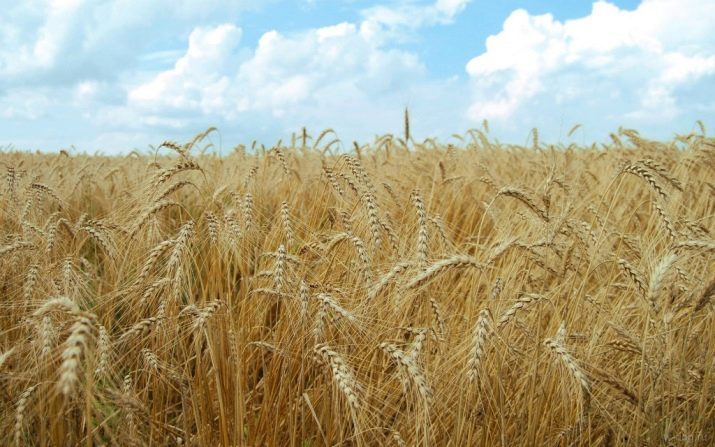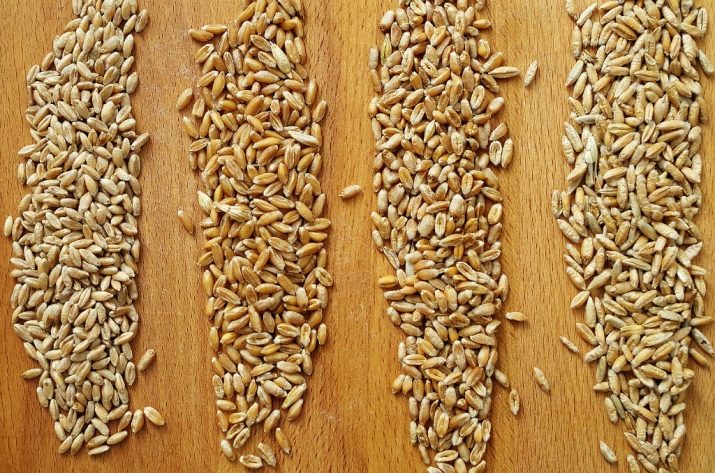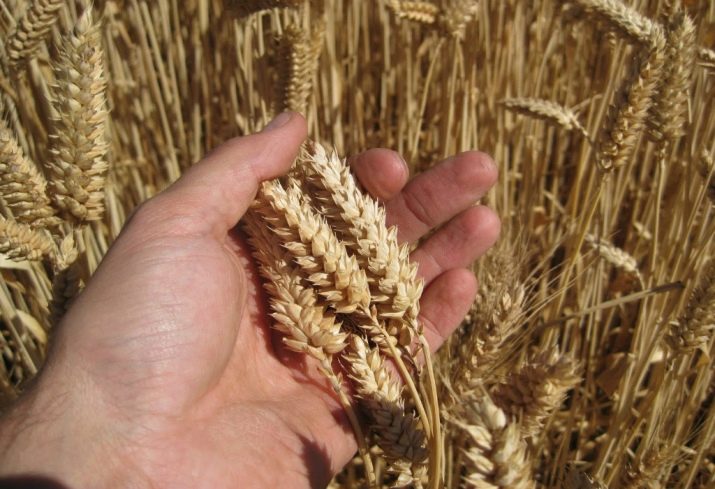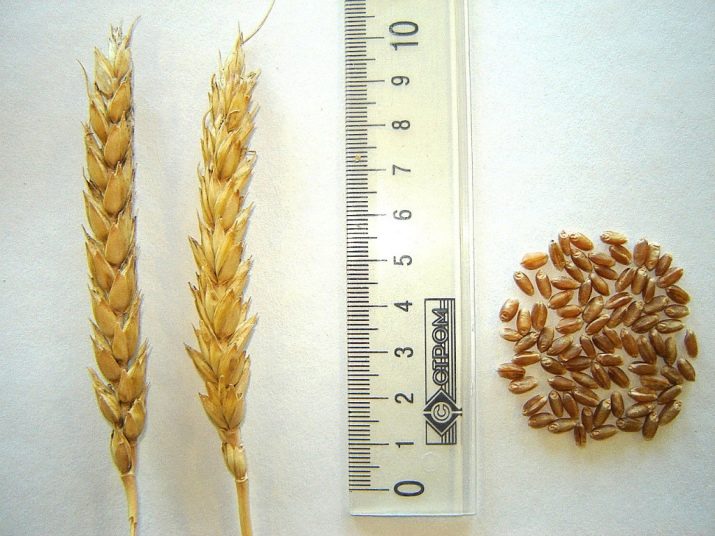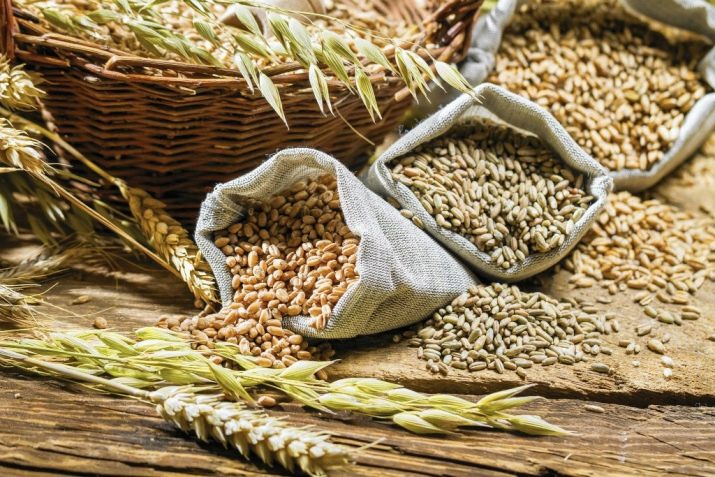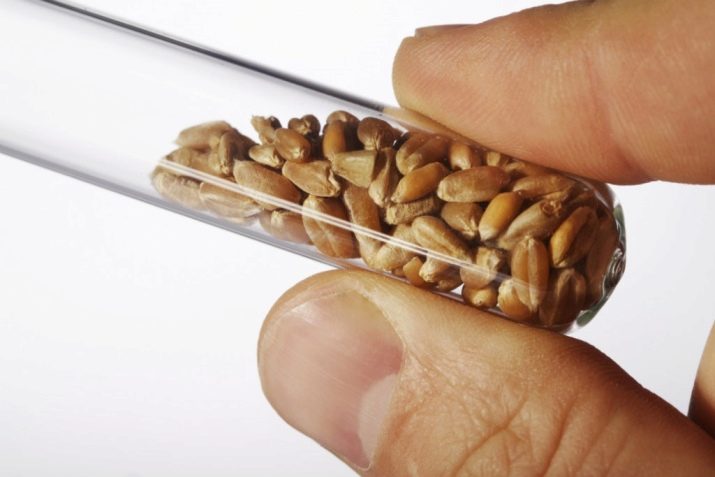Soft wheat: characteristics and differences from durum varieties
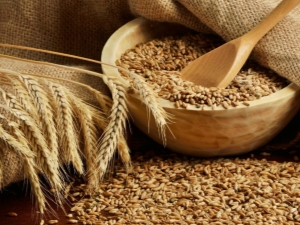
Wheat is quite a popular food, as it is a part of bakery products, flour and even medicines are made from it. Those who watch over their food also do not miss the opportunity for breakfast to eat wheat porridge with the addition of fruit.Today we will get acquainted with the product in more detail, find out what climatic conditions are necessary for wheat growth, what types and species are, and also talk about the beneficial properties of the plant.
Description, cultivation, collection
Soft wheat is an annual cereal, whose height ranges from 50 to 150 cm. There are two ways of planting cereal: narrow-leaved and ordinary. In the first case, the interval should be about 7-8 cm, in the second - 15 cm. Seeds are buried to a depth of 3 to 8 cm. Do not forget to also feed with ordinary manure or composts. At the initial stages of plant development, the nodes look bare or lowered, and inside they are thin and hollow. During growth, the leaves gradually begin to harden and reach a width of 16 mm.
The name of the variety fully characterizes the structure of wheat, because it does not differ in brittleness, but rather soft and elastic.
If you live in Western Europe or Russia, then it is better to grow soft wheat.because the climate is more humid compared to Canada or Argentina, where the climate is drier, and it is suitable for hard varieties. Most often, wheat is used as a grain, flour, bran and straw are made. The composition of the cereal includes substances such as starch, carbohydrates, proteins, fats, phosphorus, magnesium and potassium. During harvesting, the spikelets initially pass the cutting stage, after which they are dried, threshed, and the grain is separated from the straw.
Kinds
Soft wheat grains differ in color, shape and texture of endosperm. There is spring and winter wheat. All varieties differ not only in composition and taste, but also in such traits as color and vitreousness. Soft wheat can be winter and spring, red grain and white grain. Also, this cereal has a different glassiness (from 40 to 75%). Species such as "Altai", "Voronezh" and "Lyuba" belong to the spring red grain. The spring belozernaya includes such varieties as "Novosibirsk" and "Saratov". "Volgograd and Obriy" refers to the type of winter red grain wheat, and the white-grain winter in its row contains such varieties as "Albidum" and "Kinsovsky".
Differences soft and hard
There are two types of wheat: hard and soft. It should be noted that each of these species also has its own classification. Flour is made from soft wheat. According to the structure it contains a wide, but at the same time a short spike, as well as a rather short spine, it happens that it is completely absent.
Soft wheat is good because it contains a lot of protein.
The structure of hard wheat is much denser, the grains do not get enough sleep, but the difficulty lies in finding them. Externally tight film wraps each spikelet. The color is quite rich yellow color and at the same time with a pleasant smell. Such wheat is used to make pasta. Often you can see the inscription on the packaging "Made from hard varieties."
Regardless of the fact that different varieties are used in completely different recipes, it is worth noting that outwardly they are also quite simple to distinguish, the main thing is to know the main factors by which you can easily determine this.
The first thing to remember, the obvious difference lies in the ears and grains themselves, as well as the following factors:
- in soft wheat straws are thin and hollow;
- hard varieties have thick stems;
- powdery consistency and vitreousness, which, in turn, may be of a different color, from white to dark red;
- for hard varieties, the color varies from yellow to brown, and the grains are stiff;
- since wheat is produced from soft varieties, the starch is most often soft in it, then the flour will turn out crumbly.
GOST
Developed in the USSR standards inherent in wheat, are regularly checked by experts and edited, depending on changes in this culture. Find indicators can always be in the Annual Index of national standards.Learn about the proper cultivation and recommendations for it can be in the GOST, which is valid to this day - GOST R52554-2006 “Wheat. Technical conditions. It contains all the information about the types and types of wheat that exist, what technical conditions must be observed, a detailed description of commercial properties, as well as the rules for receiving and transporting the product.
As for the classification of the plant, then this is GOST 93-53-90. It provides indicators of product classification. The current GOST 13586.3-83 defines the basic rules for acceptance, sampling and sample formation. If wheat and grains are healthy, then they should not contain mold, in appearance should not be chipped, the surface is smooth and even in color. The smell is saturated, without any acids and chemistry.
The main component that determines the class of wheat is protein. In some cases, the percentage of its content can reach 23%. In most cases, the protein is contained in solid varieties and a large amount of it can be found precisely in the seeds of the first class, and at least in the seeds of the fifth class. The content of gluten in the composition of wheat is of great importance for the baking industry. From this component will depend on the quality of the future product, namely the elasticity, elasticity and taste characteristics.
Also do not forget about the glassiness of wheat, which has an impact on the quality of flour. Wheat can be attributed to vitreous or partially vitreous and even mealy after analysis of the consistency of the endosperm.
GOST 10842-89 is responsible for the size of the seed. This indicator is calculated taking into account the size and maturity of the seed. Both hard and soft wheat varieties are equally beneficial for our body. The composition of both species contains proteins, fats, carbohydrates, oils and useful amino acids. It is worth noting that, compared to soft ones, products made from hard varieties are considered more useful because they contain more vegetable proteins and fiber, and pasta keeps its shape better during cooking. Also, wheat is often used in the preparation of your favorite wheat beer, as well as for feeding livestock.
Video review of different varieties of wheat in the video below.

